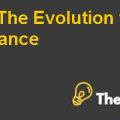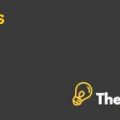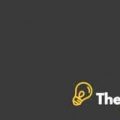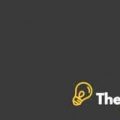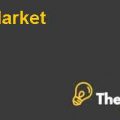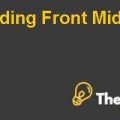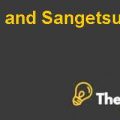
Recent changes in the fine art industry and the economy, financial performance violated Martin Art Gallery. Marten Arts Gallery owner was concerned that there was no future for him in the fine arts industry. Although the business regained profitability in the first half of 2009, the owner decided it was time to look at all the options, from adding a second store to sell the business. "Hide
by Elizabeth M. Grasby, Andrew Hines Source: Richard Ivey School of Business Foundation 12 pages. Publication Date: Aug 09, 2010. Prod. #: 910B05-PDF-ENG
REPORT OBJECTIVE
This report aim to analyze all options available to Pal and recommend appropriate course of action regarding future direction of Marten Arts Gallery Inc. (MAG).
DATA SUMMARY
MARTEN ARTS GALLERY
- Typically gallery contained 100 to 150 art works on site of premium quality, over the years displaying work of artists some of whom became world renowned. Two third of space was dedicated to exhibitions showcasing works for three weeks period.
- Exclusive rights within 80km radius, artists could sell their works through up to 20 different outlets.
- Premises purchased by Pal in 1995, for $217,000
- Pal is also looking after upkeep of business networks, website, inventory systems and book-keeping.
- MAG served customer mainly from Canada but increasingly sales to American customers had increased to 25% of total sales. However recently sales had significantly declined as a result of appreciation of Canadian dollar and increased border security between the two countries deterring tourists
- Two groups of customers: tourists, who were not familiar with MAG’s art and made unplanned purchases at MAG accounted for about 80% of visitors purchasing about 20% of total sales. Rest were to followers who accounted for 80% of gallery’s sales.
- Moderate competition as three other galleries mainly catered to different segments of market.
OPERATIONAL AND FINANCIAL DATA
- Prices range from $50 to $10,000
- 55% of work done on consignment with pre-determined percentage commission
- 45% sales of artwork purchased by gallery
- With a peak in sales in 2005 of $437,000, significant decline in sales and profits since then due to a variety of factors such as appreciation of Canadian dollar vs. US dollar, repercussions from recent economic recession of 2008,
INDUSTRY
- Economy in recession, with spending shrinkage of 3.5% over past 12 months
- Western Hemisphere Travel Initiative (WHTI) made it difficult to deliver products between Canada and United States
OPTIONS
Status Quo
- Profitability lower than expectations, however there was a small profit in first half of 2009
- Expectations of return to 2007 levels in terms of sales for 2009
- 2% (of 2008 sales) decrease expected in cost of sales
- There is managerial push to decrease operating expenses by 25% through reduced advertising, lower wages and admin costs
Enable e-commerce
- Online website exists at the original cost of $8,000
- $15,000 projected cost of enhancements to enable full e-commerce function replacing gallery’s POS
- $60,000 of additional sales expected from system in 1st year, with a transaction fee of 2.5% on all online transactions.
- System would increase maintenance expense by $1000 every month
Stratford Expansion
- Stratford, an hour’s drive from Bayfield; Canada’s premier arts town with a population of 30,000
- Drew people from all over Canada and US throughout the year
- Held Stratford Shakespearian Festival, Canada’s most prominent arts festival, an annual theatre event from April to November
- Prospective location found, rent of $4,000 per month, could be operational by September end, estimated sales of $400,000 in year 1, utilities $400 a month, wages $75,000 per year, $20,000 on advertising, $5,000 on administrative costs, $4,000 on displays and $5,000 for travelling.
Revenue $400,000
Costs
Utilities 12×400 $4,800
Wages $75,000
Advertising $20,000
Admin costs $5,000
Display costs $4,000
Travelling $5,000 $(113,800)
Profit $286,200
Return of 115% (286,200/250,000) on initial capital investment, assuming no substantial working capital requirements.
- Financing of project through $250,000 loan at 2.25% + , $100,000 for inventory, $80,000 for leasehold improvements, $40,000 for training and store setup, $10,000 for POS equipment,
Other Venues
- Sale of collection through other venues. Costs $3,500 for booth and display materials
- Toronto Arts Expo: annual event at a weekend in April / May, hosted over 300 distinguished artists and galleries. Global nature of visitors, booth fee of $12,500 plus $1,000 related expenses. Price per piece of $5000 to $7,000.
- Affordable Art Fair: an annual three day event, featuring 60international galleries at prices of less than $5,000. Entry fee of $8,500. $5,000 on promotion, $4,000 for other related expenses. Average sale price per piece of $3,500
Sale or Winding Down of Gallery
- Should he sell? Or should he wind down permanently or temporarily, with an option to work full time for $40,000 per year. Even if business wound down, he would need to pay utilities and maintenance at the same levels, mortgage payments, $8,000 in property taxes, $1,900 in insurance, possible rental income of $2,000 to $2,500 per month. Viability of winding down for next 12 months?...
ANALYSIS
Dennis Marten Pal has run MAG since the age of 20, he and his wife work full time on the gallery to support their family and live in an extension built to the gallery premises and Paul intended to run the gallery all his working life and be involved in arts business even if he eventually decides to move on from the gallery. So it is desirable for him to return the gallery to profitability and continue to be an entrepreneur.
PEST ANALYSIS
Political and Economic factors
Two major political and economic factors are adversely impacting MAG primarily. With the appreciation of Canadian dollar vs. US dollar, cost of Canadian goods has increased for the American customers. 2nd major impact has been the increased travel restrictions as a result of Western Hemisphere Travel Initiative (WHTI) deterring tourists from traveling between the US and Canada. Economic recession has not helped company bottom line however there are signs of recovery from recession and although art industry was impacted by the economic conditions, Canadian art market is an established and mature one and MAG’s location has helped it as being a small business in a small town popular with tourists. In recent years three other art stores have opened in the area suggesting strengthening arts sector in the area and Pal has been welcoming of the competition in the area.
In terms of opportunities, this seems to be an ideal time for MAG to expand using debt finance available at relatively low rates of interest. As is with the case with nearby town of Stratford which is considered Canada’s premier arts town, Pal should consider teaming up with other businesses especially ones involved in arts sector to collectively make an effort to enhance Bayfield image as another significant arts location, a sister town of Stratford. It has no shortage of visitors as the town is a popular tourist destination because of its beauty it would be beneficial for all businesses if three is more art related activity in the area increasing business profile of the town and bringing even bigger number of customers to the area.
Social and technological factors
One of the bigger factors in technological front is the advent of e-commerce. It has provided businesses the opportunity to be free of local demographic restrictions and tap customers located in wider region thus increasing reach without physically necessarily expanded in different locations. Paul has a website that is unmatched by any other gallery however it lacks the crucial component of e-commerce, i.e. the ability to sell its wares on the website so customers once looking at the item online end up buying the same piece from other galleries or the artist itself.
MAG’s 20% customers are the ones who know and love art and contribute up to 80% of the total revenue. Rest of the customers are tourists in the area and there is huge potential to convert some into followers by increasing visibility and good service so they might in future come just for the art of MAG. They might also recommend others and artwork that they bring home may become a source of inspiration for others to come and visit MAG therefore Pal should make customer service his top priority investing in staff training, providing value that no other can match. He should advertise the fact both with customers and artists that many displayed artwork at his gallery and became renowned implying value in displaying and doing business through MAG. Strong relationships with artists is vital so that they do most of their business through MAG and relying less on other galleries. An unmatched service with robust e-commerce setup would help with this objective.
SWOT ANALYSIS
Strengths and Opportunities
MAG has established presence in the market for a long time and Pal has a wealth of expertise in the area having run the business for two decades. In that time gallery have displayed work of more than 500 artists and some of them have gone on to become big names. Gallery is well known in the area and is located at a popular tourist hub drawing people in from not just Canada but United States as well. Being a family business means both husband and wife are fully dedicated to the business with unique set of skills to effectively manage different aspects of the business. Pal has managed to keep operating expenses down and has achieved 25% reduction in operating costs. In 2007 gallery is once again profitable and it has the advantage of having most of its sales in cash.
Weaknesses and Threats
The biggest issue for MAG has been the decline in sales and profits. A look at Statement of earnings in Exhibit show very high interest expenses eating up virtually all of its profits. Its liquidity is not encouraging either and company is already highly geared with substantial short term loans as well as long term loan. Pal might face difficulty raising additional debt financing to implement any growth plans. In this situation risk of nonpayment of interest and bankruptcy has heightened. If Pal managed to expand, workload would greatly expand and he would need additional resources to perform duties such as book-keeping, inventory management and look after other day to day operations at Bayfield. In the event of a sale, without Pal gallery may not be worth much in itself and it would be difficult for Pal to find a buyer with adequate set of skills suitable to run the business and be willing to pay a reasonable price.
OPTIONS ANALYSIS
STATUS QUO
With small profit in the first half of 2007, there are signs of recovery and a chance that sales would recover to previous healthy levels. This option would enable Pal to pay full attention to its store and use all of his time to try and increase sales and be present at the floor engaging customers with his wealth of knowledge and ensuring excellent levels of customer service. Another important factor is that family lives at the extension next to the gallery at the same premises and Paul owns the property and as a last resort can sell it later on if business does not pick up as anticipated and give time to see the impact of reduced operational expenses. It may be wise to wait and see how market responds before making any decision. Another advantage with this approach would be that no new loan would be required. However challenge of continuing with this option is whether Pal would have enough earnings to support his family expenses. If his assumptions of sales growth are not accurate and operating expenses are not sufficiently reduced than he may end up bankrupt doing nothing.
- NOTE: This is just a small portion of a sample solution, to order your own case solution, kindly place the order on the website.


